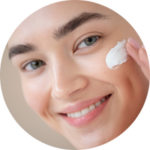How to Build a Skincare Routine That Actually Works

Building a skincare routine can feel overwhelming with the vast array of products, advice, and trends circulating. However, a well-thought-out skincare routine tailored to your skin type and needs can yield remarkable results. If you’re looking to create a skincare routine that works, this guide will take you through each step, offering practical advice and tips. Whether you’re a beginner or a skincare enthusiast, this article will help you navigate the essentials of skincare and ensure that your routine is effective.
1. Understand Your Skin Type
Before you start purchasing products, the first step in building a skincare routine is understanding your skin type. Your skin’s needs depend largely on whether you have oily, dry, combination, or sensitive skin. Here’s a quick rundown:
-
Oily Skin: This skin type often produces excess sebum, resulting in a shiny appearance, enlarged pores, and sometimes acne. The best products for oily skin help control oil production without stripping the skin’s natural moisture.
-
Dry Skin: If your skin feels tight or flaky, it may be dry. Dry skin often lacks moisture and requires products that hydrate and replenish the skin’s barrier.
-
Combination Skin: This type has both oily and dry areas. Typically, the T-zone (forehead, nose, and chin) is oily, while the cheeks are dry.
-
Sensitive Skin: Sensitive skin is easily irritated by products, leading to redness, itching, or burning sensations. Fragrance-free, gentle products are best for this skin type.
By identifying your skin type, you can select products that cater to your skin’s specific needs and avoid ingredients that might cause irritation or breakouts.
2. Identify Your Skincare Goals
Once you know your skin type, think about your skincare goals. Do you want to clear up acne, reduce wrinkles, hydrate dry skin, or maintain a youthful glow? Your goals will help guide you in choosing the right products and ingredients.
For example:
-
If you’re focusing on acne treatment, look for products containing salicylic acid, benzoyl peroxide, or tea tree oil.
-
For anti-aging, you might want to incorporate retinol, peptides, or antioxidants like vitamin C.
-
For hydration, hyaluronic acid and ceramides are your best friends.
The clearer you are about your skincare goals, the easier it will be to tailor your routine and choose the right ingredients.
3. Basic Skincare Routine: The Essential Steps
A simple, effective skincare routine involves a few basic steps: cleansing, toning, treating, moisturizing, and sun protection. Here’s how you can structure your routine:
Step 1: Cleansing
Cleansing is the first and most crucial step in any skincare routine. It removes dirt, oil, and makeup, which can clog pores and lead to skin issues. Depending on your skin type, choose a cleanser that suits your needs:
-
Oily Skin: A gel or foaming cleanser works well to remove excess oil.
-
Dry Skin: Cream-based or hydrating cleansers are gentle and won’t strip the skin of its natural moisture.
-
Sensitive Skin: A fragrance-free, mild cleanser is ideal for calming sensitive skin.
-
Combination Skin: Look for a balanced cleanser that hydrates without making your skin greasy.
Use your cleanser twice daily, in the morning and evening. Always use lukewarm water as hot water can irritate the skin.
Step 2: Toning
Toning helps to restore the skin’s pH balance after cleansing. It can also remove any remaining dirt and oil, and tighten pores. While toners used to be harsh astringents, modern toners are much gentler and come in a variety of formulations.
-
For Oily Skin: Look for toners with astringent properties, like witch hazel or salicylic acid.
-
For Dry or Sensitive Skin: Hydrating toners with ingredients like glycerin or aloe vera can replenish moisture.
-
For Combination Skin: Opt for a soothing toner that can hydrate dry areas while balancing the oily zones.
Step 3: Treating (Serums and Spot Treatments)
Serums are concentrated formulas designed to address specific skin concerns, such as acne, wrinkles, pigmentation, or dehydration. Choosing the right serum depends on your skin goals.
-
For Acne: Choose a serum with salicylic acid or niacinamide to fight inflammation and reduce breakouts.
-
For Anti-Aging: Retinol, peptides, and antioxidants like vitamin C can help smooth fine lines and protect against environmental damage.
-
For Hydration: Look for serums with hyaluronic acid or glycerin to keep your skin plump and moisturized.
If you’re targeting specific areas, like acne or hyperpigmentation, you may also want to use spot treatments. Ingredients like benzoyl peroxide, sulfur, or tea tree oil are effective at treating blemishes.
Step 4: Moisturizing
Even if you have oily skin, moisturizing is essential. Moisturizers help to lock in hydration, repair the skin’s barrier, and improve texture. Choose a moisturizer suited to your skin type:
-
For Oily Skin: A lightweight, non-comedogenic (won’t clog pores) gel-based moisturizer is ideal.
-
For Dry Skin: Go for a richer, cream-based moisturizer with ingredients like ceramides or shea butter.
-
For Sensitive Skin: Opt for a fragrance-free, soothing moisturizer with calming ingredients like chamomile or aloe.
Moisturize twice a day to keep your skin hydrated and prevent it from becoming too dry or irritated.
Step 5: Sunscreen
Daily sun protection is a non-negotiable step in any skincare routine. Sunscreen protects the skin from harmful UV rays, which can cause premature aging, pigmentation, and skin cancer. Apply a broad-spectrum sunscreen with an SPF of at least 30 every morning, even if you’re indoors. Look for a sunscreen that suits your skin type:
-
For Oily Skin: Gel-based or oil-free sunscreens that won’t clog pores.
-
For Dry Skin: Hydrating sunscreens with added moisturizers or SPF-infused oils.
-
For Sensitive Skin: Mineral sunscreens with physical blockers like zinc oxide or titanium dioxide are less likely to irritate.
Remember to reapply sunscreen throughout the day, especially if you’re spending extended time outdoors.
4. Modify Your Routine with Additional Steps
Once you’ve learned the fundamental steps, you’ll be able to incorporate further treatments according to your requirements.
Exfoliation
Exfoliation is a way to eliminate dead skin cells, revealing the brighter, more even skin tone. There are two major types of exfoliants available:
-
Physical exfoliants Scrubs using tiny particles that are used to manually scrape away dead skin cells.
-
Chemical exfoliants products that contain AHAs (alpha-hydroxy acids) or BHAs (beta-hydroxy acids) that break down the dead cells of skin.
Do a little exfoliation once or twice per week to increase the skin’s texture and brightness. Avoid excessive exfoliation since it may cause irritation to the skin and cause itching.
Masks
Masks for face are ideal to address specific concerns such as acne, dryness or dullness. Clay masks are great for oily skin. the hydrating masks that contain ingredients such as honey or hyaluronic acids are perfect for dry skin.
Masks are recommended to be applied every two weeks, based on your skin’s requirements.
5. Adjust Your Routine Based on Season
Your routine of skincare could require modifications based on the time of year. For instance, during winter months, you could require more rich moisturizers and hydration to prevent dry and flaky skin. In warmer seasons you may prefer lighter formulations, and even extra sunblock.
Additionally your skin’s requirements can change as you get older or if you are experiencing changes in your surroundings or your life. Make sure to regularly review your routine and adjust as necessary.
6. Be Patient and Consistent
The most crucial aspects to consider when developing your skincare routine is that the effects require time. If you’re dealing with acne, fine lines and dryness issues, it could take a couple of weeks or months to notice improvements.
Consistency is the key to success. Keep to your plan for at minimum 4-6 weeks to determine how it’s performing for you. If you’re not seeing the results you’re hoping for you’ll want to consider changing one or two products. Take your time and let your skin adjust prior to making any adjustments.
7. Incorporating Supplements for Skin Health
While skincare products are essential, don’t overlook the importance of supporting your skin from the inside out. Supplements can provide your skin with the necessary nutrients to thrive. A healthy diet and supplements can complement your skincare routine and enhance your skin’s appearance.
Popular Supplements for Skin Health:
-
Collagen: Collagen is a vital protein that maintains the skin’s elasticity and firmness. As we age, our body’s collagen production decreases, leading to wrinkles and sagging skin. Collagen supplements can promote skin elasticity, reduce wrinkles, and keep the skin plump.
-
Omega-3 Fatty Acids: Found in fish oil and certain plant oils, omega-3 fatty acids are known for their anti-inflammatory properties. They help improve skin hydration, reduce redness, and support the skin’s barrier function, keeping it smooth and supple.
-
Vitamin C: As a powerful antioxidant, vitamin C helps to protect the skin from environmental damage and supports collagen production. It can also brighten skin and even out pigmentation, reducing dark spots and promoting a glowing complexion.
-
Zinc: Zinc is essential for maintaining healthy skin, as it supports the immune system and promotes wound healing. Zinc supplements can also help control oil production and reduce acne breakouts.
While supplements can benefit your skin, always check with a healthcare professional before introducing new supplements into your routine, especially if you have pre-existing health conditions.
8. Avoid Overcomplicating Your Routine
In the world of skincare, it’s easy to fall into the trap of trying every new product or following the latest trends. However, using too many products can lead to skin irritation, clogged pores, or even exacerbating skin issues.
It’s important to keep your routine simple, especially if you’re new to skincare. Start with the basics: cleanser, moisturizer, and sunscreen. Once your skin adjusts, you can begin adding products like exfoliants, serums, or masks.
Also, be mindful of how often you introduce new products. Testing new products one at a time allows you to identify which ones work best for your skin, avoiding potential reactions.
9. Consult a Dermatologist
If you’re unsure about your skin’s specific needs or if you struggle with persistent issues like acne, eczema, or rosacea, consulting a dermatologist is highly recommended. A dermatologist can provide personalized recommendations tailored to your skin, help you create an effective skincare routine, and even suggest prescription treatments if necessary.
A dermatologist can also help you address concerns such as hormonal imbalances or other underlying issues affecting your skin.
Conclusion
Building a skincare routine that actually works is all about understanding your skin type, setting clear goals, and using the right products. By following the essential steps of cleansing, toning, treating, moisturizing, and protecting your skin with sunscreen, you’ll be on your way to healthier, more radiant skin. Remember to customize your routine with additional treatments like exfoliation and face masks, and be patient with the process. Over time, your skin will thank you for the care and attention you’ve given it, helping you achieve the glowing, clear complexion you’ve always wanted.






